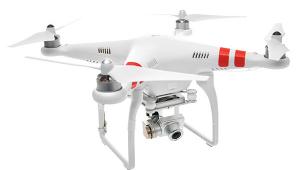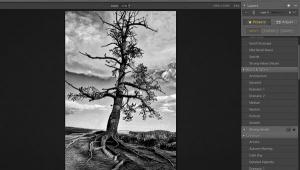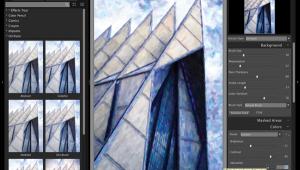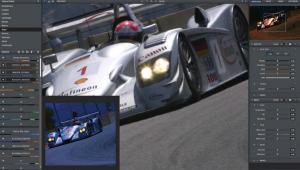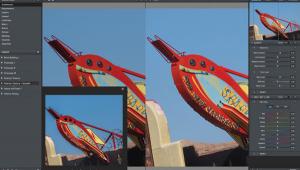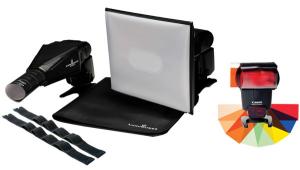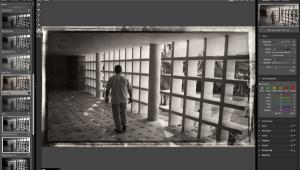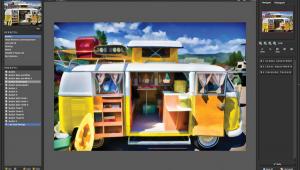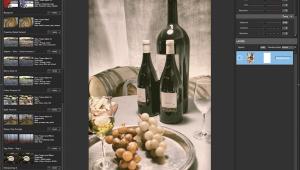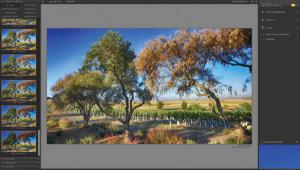Digital Innovations
Blurring The Lines; Software Solutions For Soft Effects
"There is nothing worse than a brilliant image of a fuzzy concept." --Ansel Adams
It could be that the sainted Adams meant a fuzzy image of a brilliant concept, but we'll never know. This month's column looks at using imaging software to blur an image and was inspired by a letter from reader Carol Baker. As a movie buff you gotta know that name really caught my attention. Baker told me she likes "the effect that blur and selective blur, especially in a black and white image, can have" and feels "blur and selective blur can add mystery and depth to an otherwise ordinary photograph." You asked for it, Baker, so here it is.
 |
|
|
Digital Blur & Soft Focus
While you can use camera filters, uncorrected lenses and shutter speed/aperture
setups for attaining soft focus and blur effects, we'll cover digital
blurring techniques here, where an image is typically blurred through the software
averaging pixel values to soften edge detail. Most image-enhancement programs,
including Adobe's Photoshop (www.adobe.com),
have at least one blur command built-in. One of the newest and most fun filters
found in Photoshop CS2 is Lens Blur (Filter>Blur>Lens Blur). This filter
can blur an image to give the effect of a shallower depth of field so that some
objects in the image stay in focus while others are blurry. The way this digital
blur is imaged depends on the iris shape you choose. You can change blades of
a virtual iris by curving them (making them more circular) or rotating them.
You can check the effect on screen by clicking the plus button in the control
panel to magnify the preview.
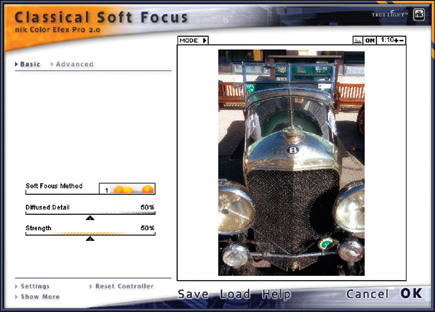 |
|
|
The nik multimedia (www.nikmultimedia.com) Color Efex Pro 2.0 suite of Photoshop compatible plug-ins contains a Classical Soft Focus filter that mimics soft focus camera filters used in conventional photography--think Zeiss Softar--and adds diffusion to an image while preserving detail. The control panel's Soft Focus Method pop-up menu lets you select the type of blur, which can range from a subtle soft focus effect to more pronounced diffusion. The Diffused Detail slider controls the amount of random detail to maintain the appearance of some sharpness and prevent banding. While many photographers traditionally use soft focus techniques for portraiture, I like to use it for images of vintage automobiles to add to that "old car" look. So use it how you like, don't be bound by any "rules."
 |
|
|
Andromeda Software's (www.andromeda.com) ScatterLight Lenses 1.2 Photoshop compatible plug-in produces a broad scope of realistic patterned and diffusion lens effects that range from subtle soft focus effects to more dramatic effects that scatter and focus light over the brightest areas of an image. ScatterLight Lenses has four different categories: Dream Optics pulls and scatters light from highlighted areas to create dreamy highlights throughout the image; SoftFocus uses various optical lens patterns for softening portraits; SoftDiffuser adds diffusion or fog; StarLight focuses light over the brightest areas of your image to create a starlight effect.
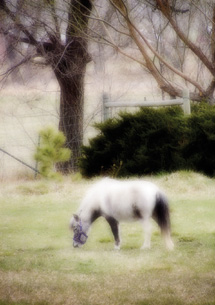 |
|
|
My current favorite soft focus/blur power tool is the ShadowSoft & Grainy
Photoshop Action Set (www.craigsactions.com).
This is a collection of monochrome (black and white, blue, sepia, and green)
Photoshop Actions that let you create and control toned softness effects, with
options for some delightfully grainy enhancements. While originally designed
for wedding and portrait photographers, these Actions are fun to use with commercial
or artistic images. ShadowSoft & Grainy Actions can be run as a one-click
operation and are customizable to fit your personal style.
